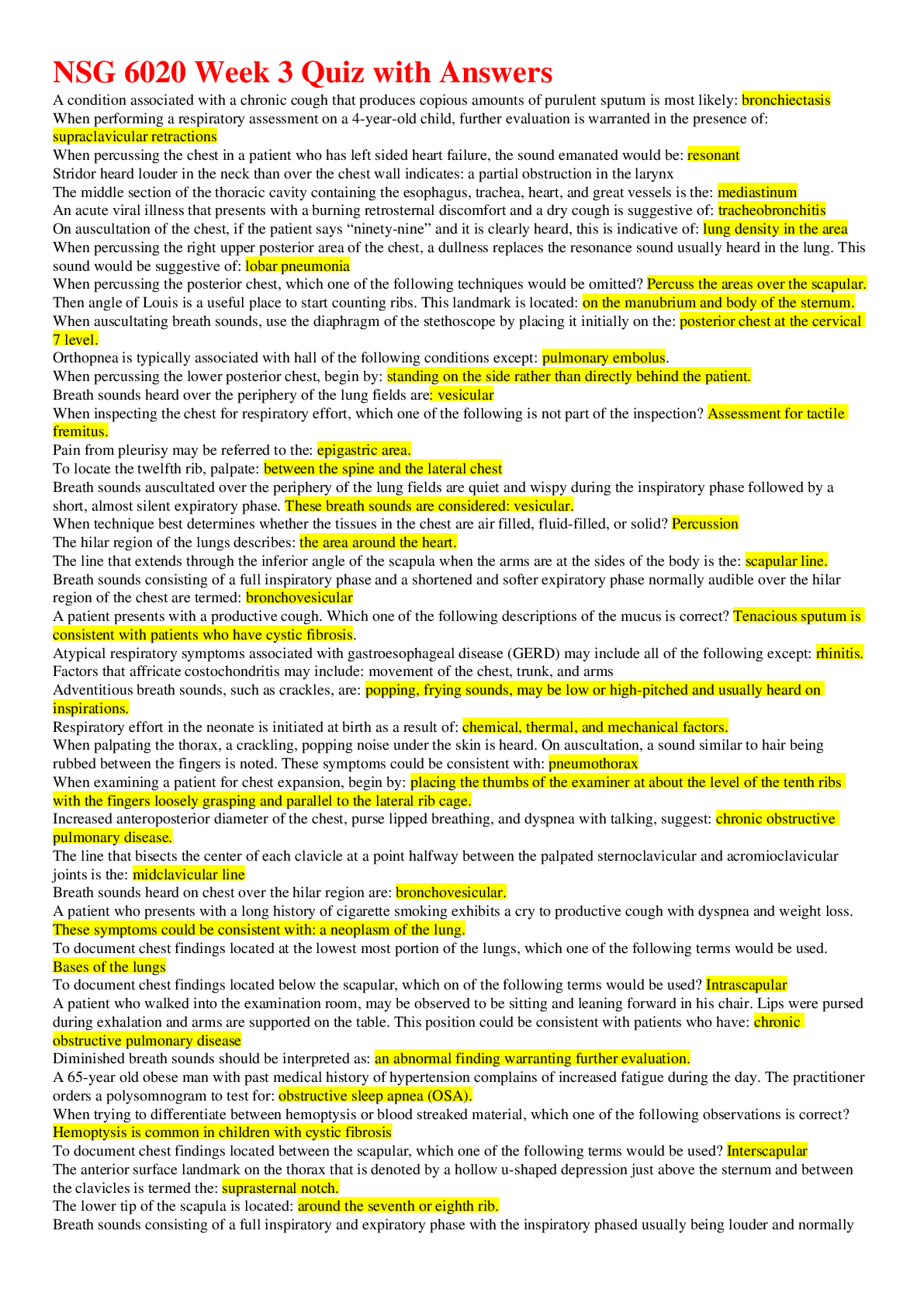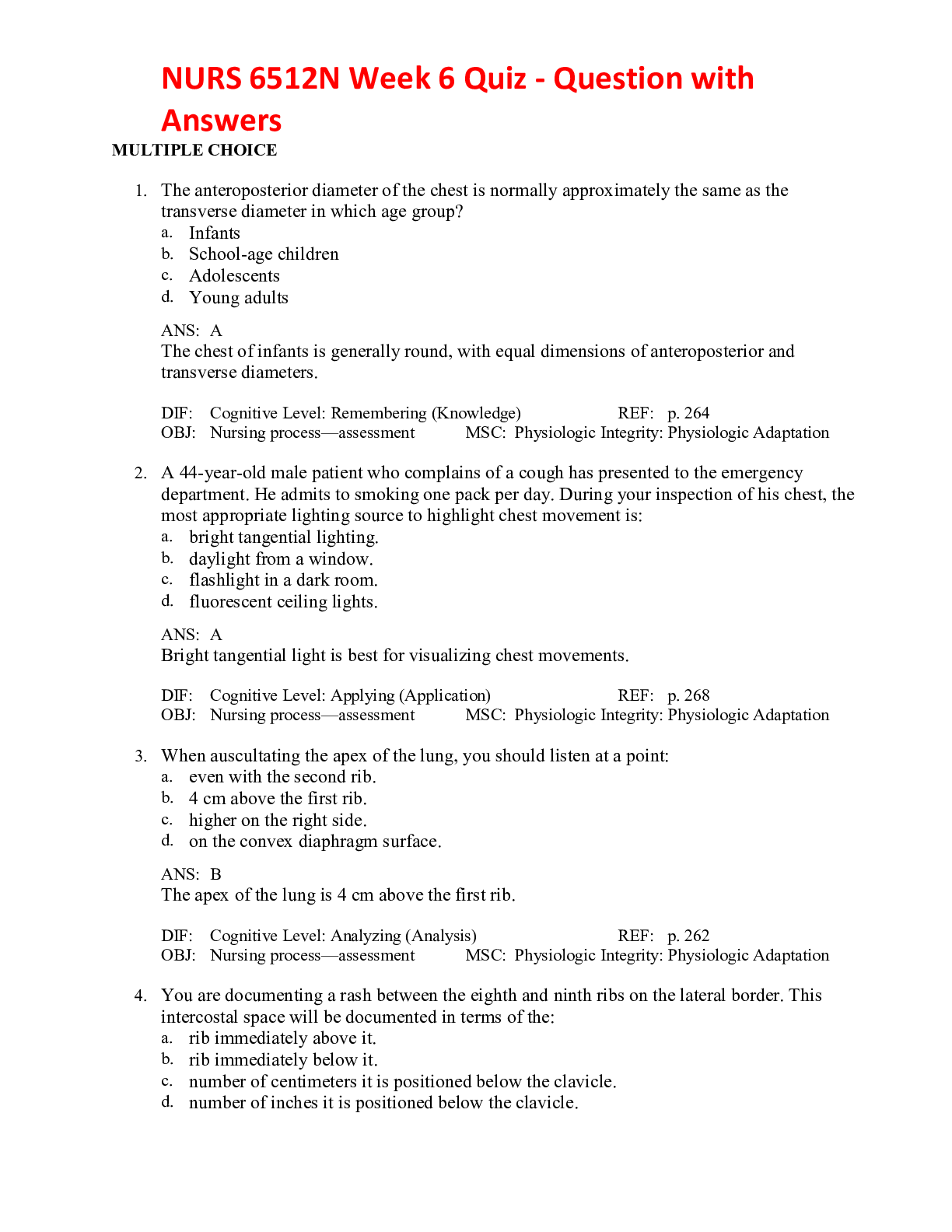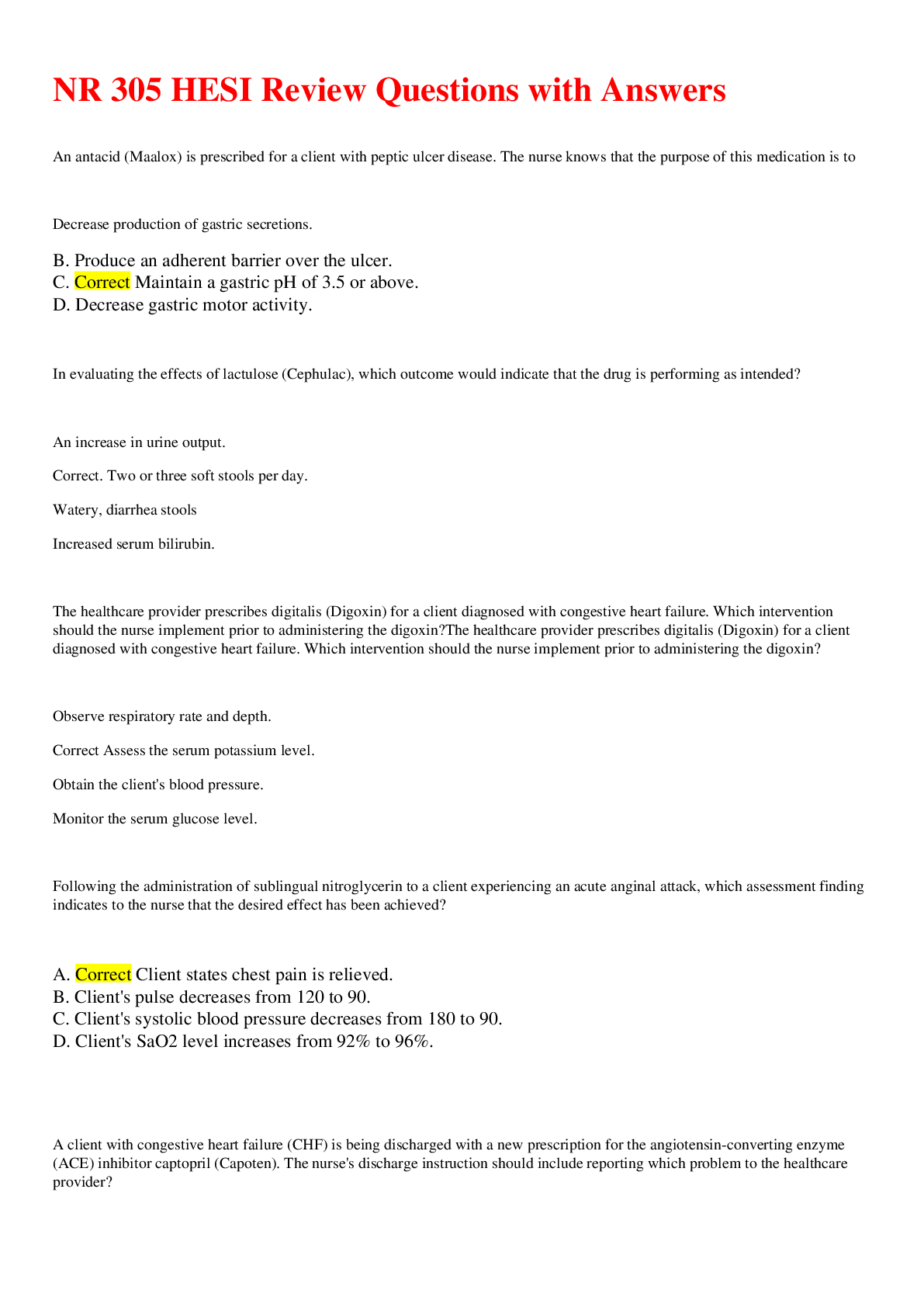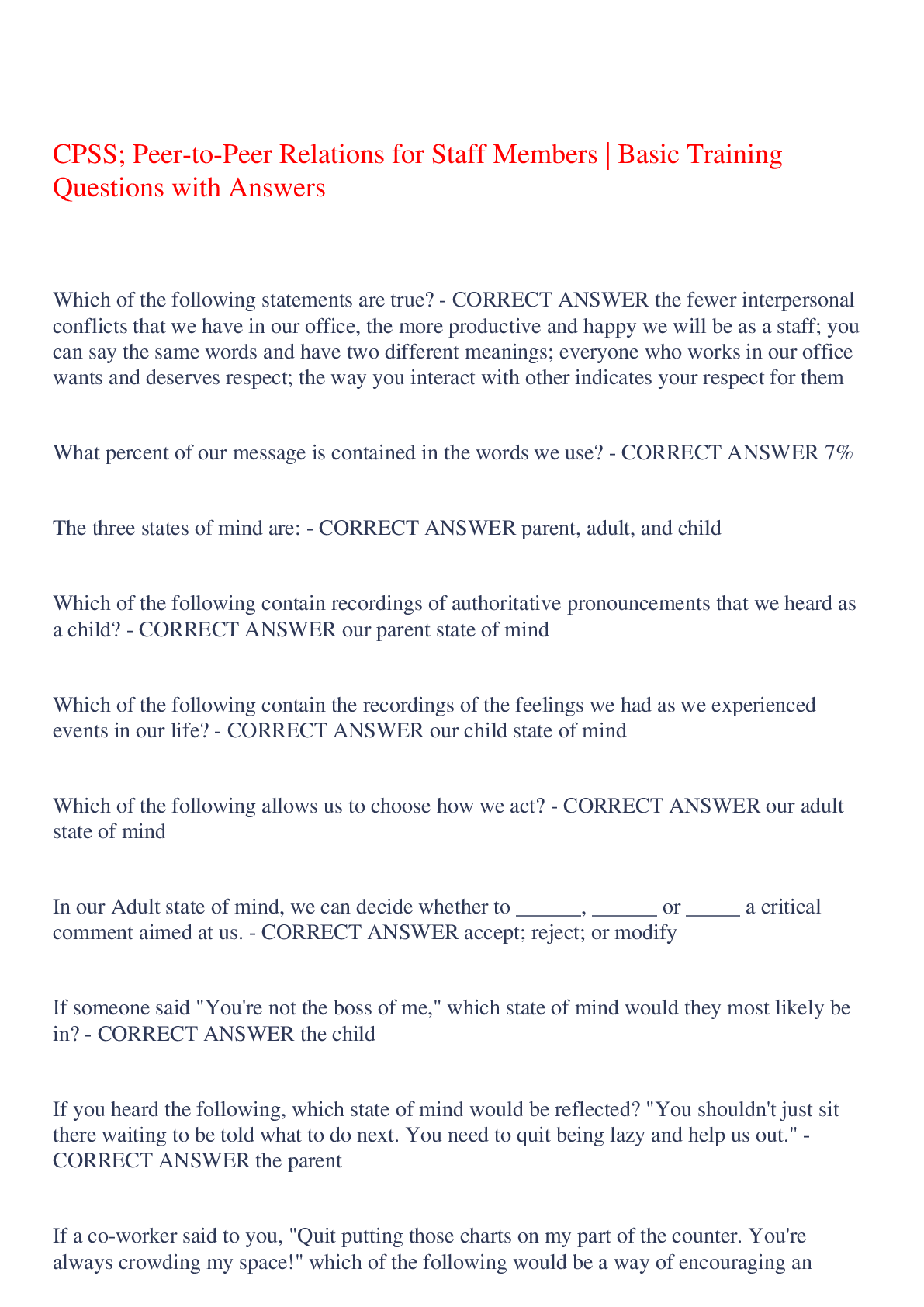Education > EXAM > Methods & Materials in Early Childhood Education Questions with Answers,100% CORRECT (All)
Methods & Materials in Early Childhood Education Questions with Answers,100% CORRECT
Document Content and Description Below
Methods & Materials in Early Childhood Education Questions with Answers DAP - CORRECT ANSWER Developmentally Appropriate Practice Benefits of Play - CORRECT ANSWER Allows children to A. Pract... ice a variety of new skills. B. Act on objects. C. Discover properties of the physical world. D. Problem Solve; Strengthen their logical thinking. E. Develop creativity and imagination. F. Develop physical/ motor skills. G. Make active use of their whole bodies. H. Express themselves emotionally. I. Develop their language skills. J. Develop their social skills. K. Develop their symbolic ability. L. Try out their ideas of how the adult world works. M. Take safe risks. How do young children learn? - CORRECT ANSWER Interaction Play Hands-On Peers Observation Licensing & Accreditation of Child Care Centers - CORRECT ANSWER Licensing- required by law. Accreditation- (credentialing)Voluntary. High quality program. Met higher standards of quality than those required of it by licensing. MSDE - CORRECT ANSWER Maryland State Department of Education. Regulates many aspects of education in Maryland. (i.e. teacher education, teacher certification) Office of Child Care - CORRECT ANSWER Responsible for licensing and inspecting all childcare centers. Regulations - CORRECT ANSWER Laws passed by the Maryland State Legislature in Annapolis. COMAR: Code of Maryland Regulations Childcare Ratios [Infants- 6 weeks-18 months] - CORRECT ANSWER Group Size= 6 Adult/Child Ratio= 1 to 3 Childcare Ratios [Toddlers-18-24 months] - CORRECT ANSWER Group Size=9 Adult/Child Ratio= 1 to 3 Childcare Ratios [Twos] - CORRECT ANSWER Group Size= 12 Adult/Child Ratio= 1 to 3 Childcare Ratios [Threes/Fours] - CORRECT ANSWER Group Size= 20 Adult/Child Ratio= 1 to 10 Stages & Ages of Play [2 year olds] - CORRECT ANSWER A. Begin to pretend B. A lot of parallel play. C. Carting things around & dumping. D. "Copy Cat" E. Repetitive Play Stages & Ages of Play [3 year olds] - CORRECT ANSWER A. More imaginative pretend play than 2 year olds. B. Trouble separating pretend from real. C. May be fearful of pretend monsters (nightmares) D. Stay with play longer. E. More role play. F. Love to be helpers. Stages & Ages of Play [4 year olds] - CORRECT ANSWER A. Very sustained play. B. Assign/Assume roles. C. Power struggles in play. D. Act out fears and relieve aggression. E. A lot of dramatic play. F. Play-experiment with gender roles. G. Can play games with rules. Safety in the EC Classroom - CORRECT ANSWER A. Constant supervision B. Frequent handwashing C. Safe materials D. Universal Precautions E. Electricity F. Heat/Burns G. Water-Bathrooms H. Sharps I. Non-Toxic J. Cleaning Services Characteristics/Techniques of Good Teachers - CORRECT ANSWER A. Plan new experiences B. Provide a variety of materials C. Facilitate problem solving, use of materials D. Help children verbalize what they are doing, using feeling, descriptive language. E. Supervise clean-up Characteristics of good materials for EC Classrooms - CORRECT ANSWER A. Cheap B. Safe C. Efficient Quality Elements of Lesson Planning - CORRECT ANSWER A. Title B. Subject C. Age D. Objective E. Materials F. Procedure G. Transition H. Motivation I. Presentation How & Why of Fingerplays - CORRECT ANSWER Anti-Bias Curriculum- Why & How - CORRECT ANSWER The Anti-Bias Curriculum has been put in place to help to create a diverse learning environment for young children. This curriculum helps us to understand how we interact with other people in the classrooms, how we handle conflicts, and the materials we use to provide children with a positive message regarding diversity.Young children wonder and notice the differences among people. Some examples are having baby dolls of all ethnicities as well as reading books that include characters of all ethnicities. There are various kinds of discrimination that we need to be aware of including: race, religion, income, culture, age, ability and gender. Discrimination can be harmful to a child's self image as well as their self-esteem. An ABC should not only be used in a classroom setting with a diverse group of students but also in an alike group so that the students will be accepting of the differences in each other and also learn how to build tolerance for one another. This goes to show that diversity is a beautiful thing. When a very young child shows examples of negative discrimination, we should understand that that child is not intending to have hatred for the person being discriminated Instead, he or she is trying to understand her/his own place as well as other's in society. The teacher's role in the situation is to intervene but not become angry at the child or draw conclusions that the child's home environment is "racist." Emergent Literacy - CORRECT ANSWER Emergent- How kids learn Literacy- The process of reading and writing Classroom set-up and common activity centers, including book corners - CORRECT ANSWER BOOK CORNER: A. Quiet location out of the traffic flow. B. Well-lit. C. Sturdy low shelves displaying the covers of picture books. D. Books should be in good shape (no torn pages, etc.) E. Provide a variety of books that are appealing to different interests. F. Comfortable places to sit while reading. Prop Boxes - CORRECT ANSWER Pretend Centers How, When and Why to Read to Young Children - CORRECT ANSWER A. As we read, we point to the words. B. We act out the voices of the characters. C. Use storyboards. D. Read to build comprehension- Ask the children to predict what will happen next, Encourage the children to problem solve, Discuss feelings involved. QUESTIONS ARE OPEN-ENDED. We read at all age levels. Creativity - CORRECT ANSWER Good Music & Movement activities for young children - CORRECT ANSWER A. Exploring movement (dancing high and low, dancing with just arms, pretend to be robots) B. Make up new words to an old song and sing it for the class (Happy Birthday or Mary Had A Little Lamb) C. Bean bag dancing D. Sing Accapella Good Art activities for young children - CORRECT ANSWER Beautiful Junk- wonderful stuff that can be created from trash items, recyclables or free stuff people give to you. A. Have the kids walk around their house and search for items that can be used to create a piece of art. B. Have the kids explore the many ways you can use a paintbrush. C. Have them paint on different textures, and discovering the cool patterns they can make. Benefits of Art & Music activities in the Curriculum - CORRECT ANSWER ART: Appreciation of individual vision. Appreciation of diversity (ideas and approaches to creating). Opportunity for problem solving. Self-expression/communication. Emotional release. Sense of beauty. MUSIC: Involves movement of the whole body. Emotional outlet-expressive. Social, cooperative (group activities), Creative. Open-Ended Questions/Activities - CORRECT ANSWER A. Opportunity to explore. B. No wrong answers. C. Child Choice. [Show More]
Last updated: 11 months ago
Preview 1 out of 6 pages

Reviews( 0 )
Document information
Connected school, study & course
About the document
Uploaded On
May 19, 2023
Number of pages
6
Written in
Additional information
This document has been written for:
Uploaded
May 19, 2023
Downloads
0
Views
48














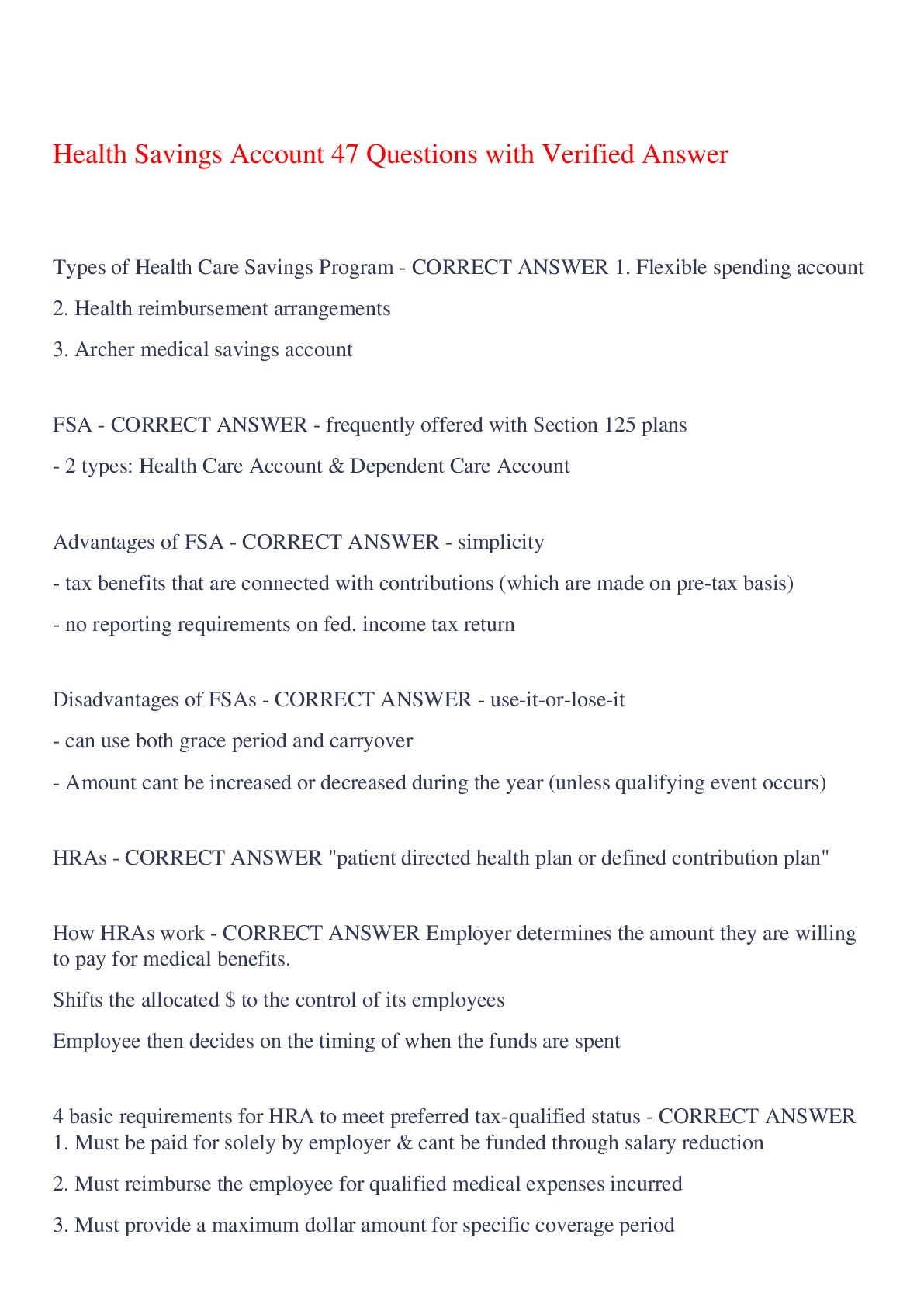



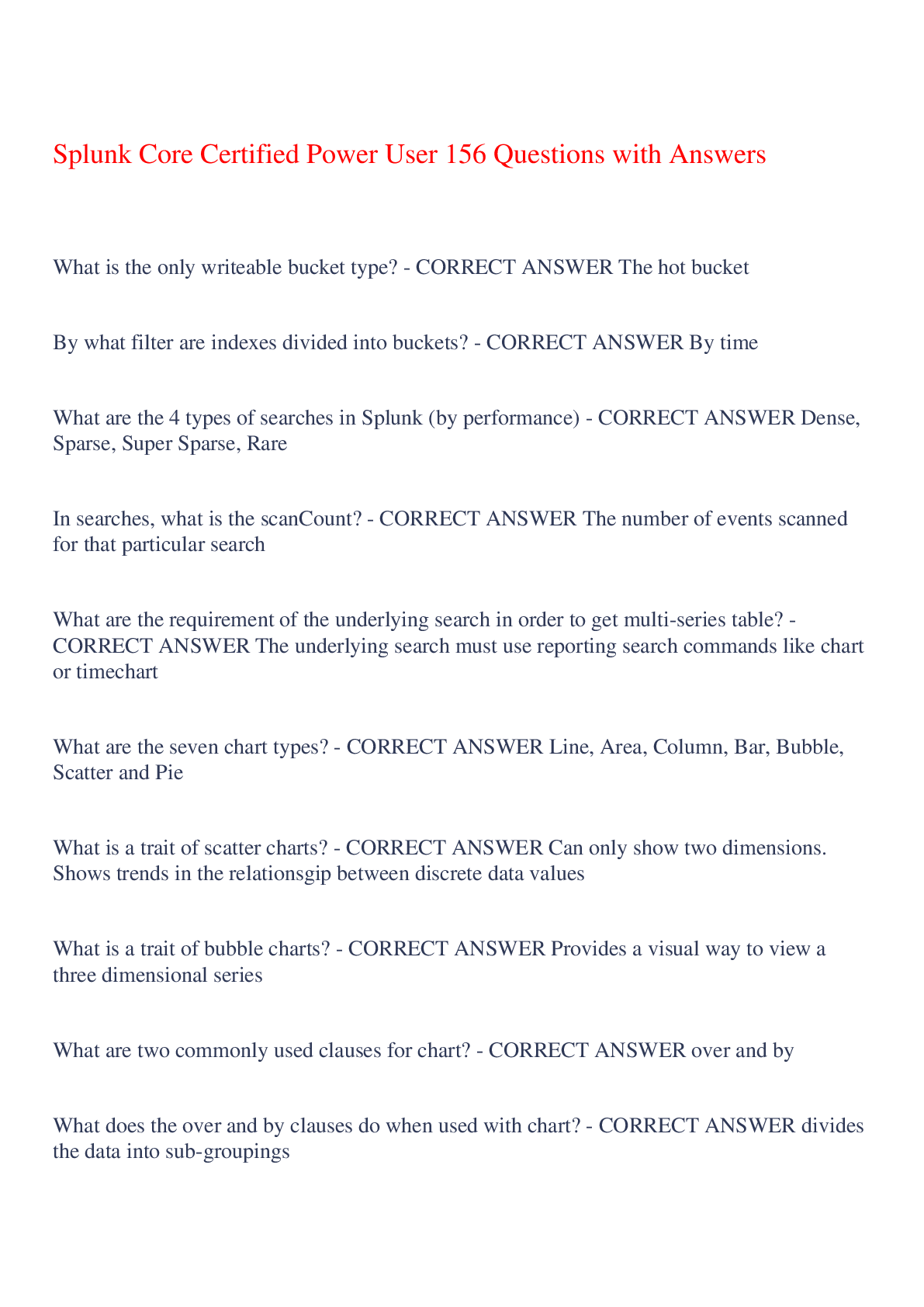
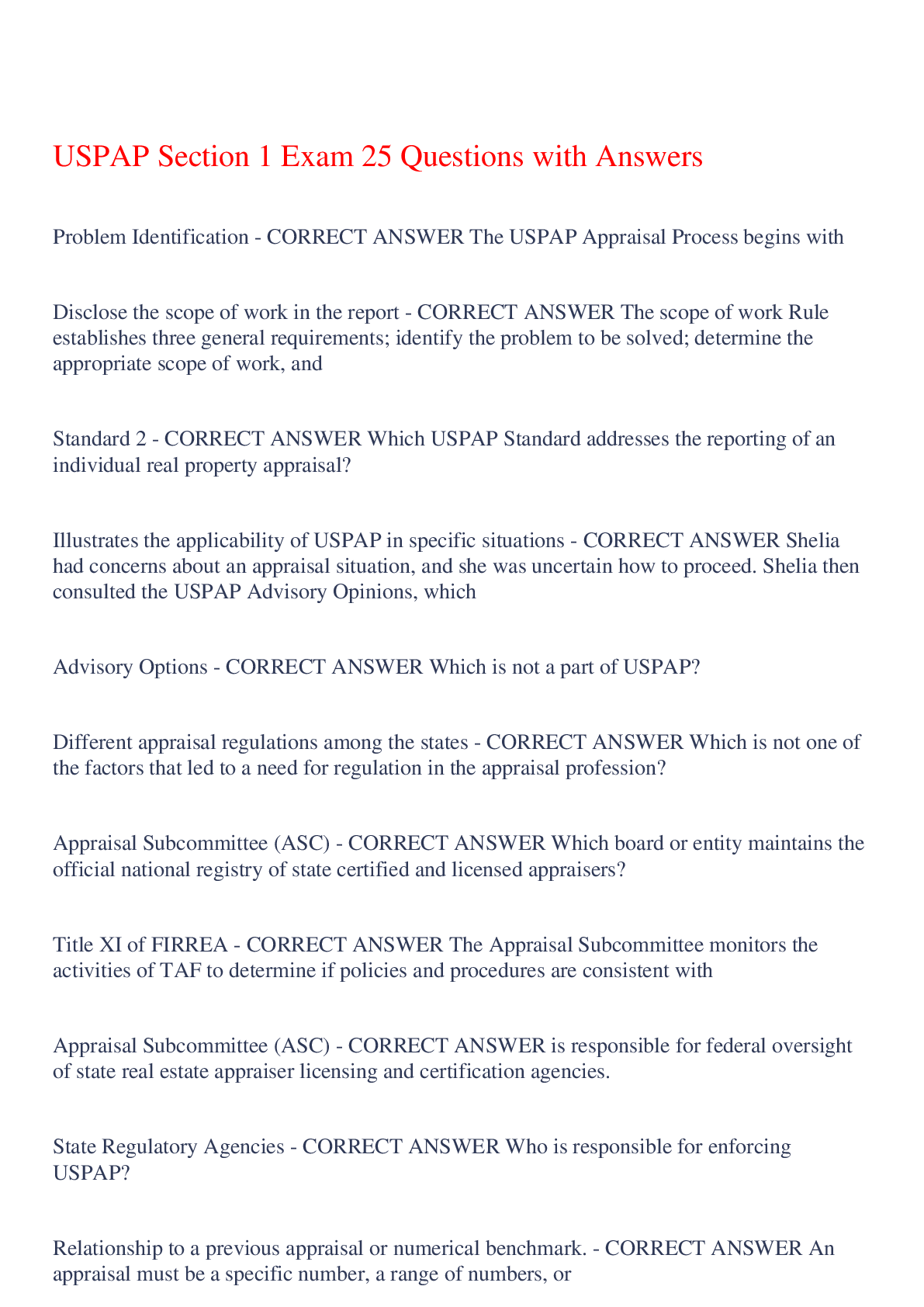
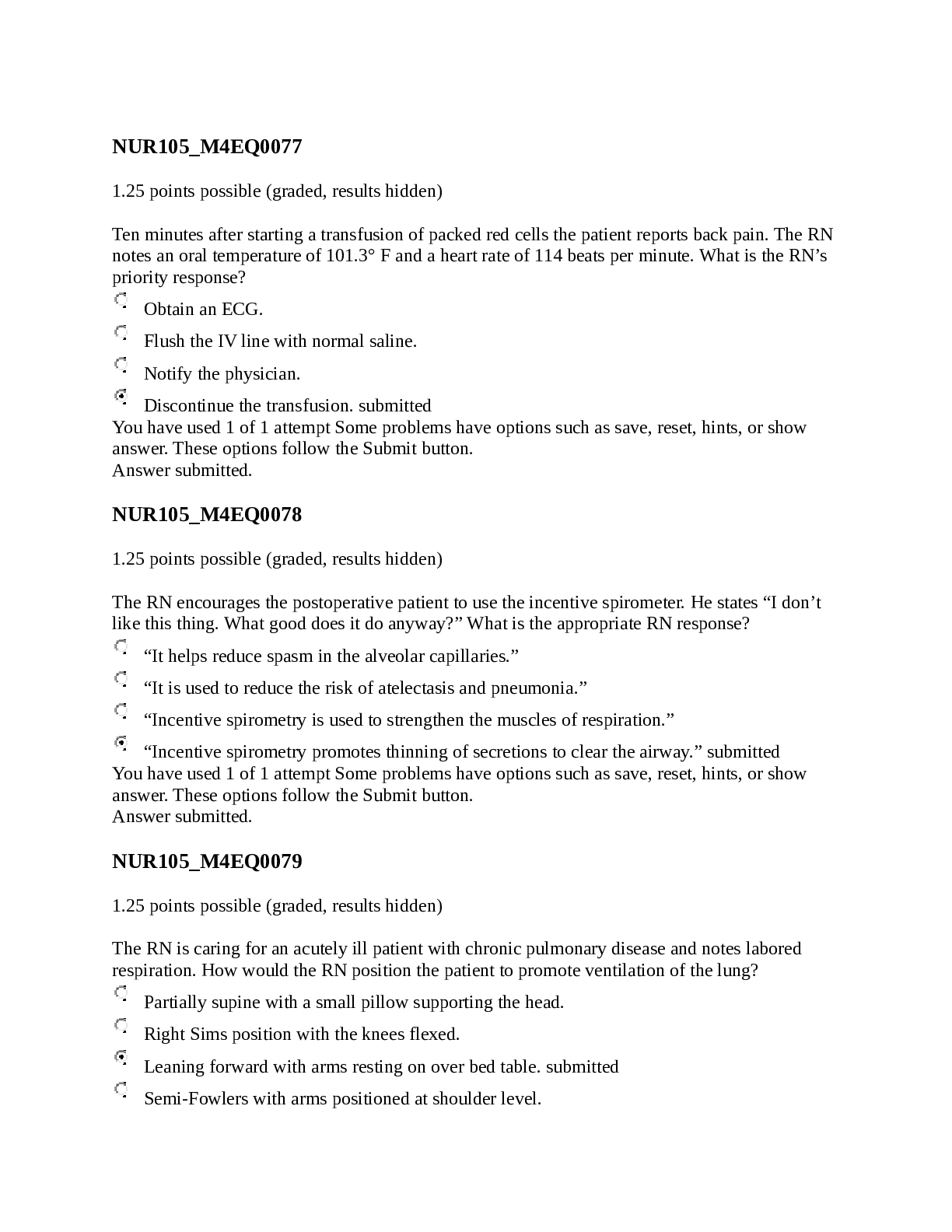

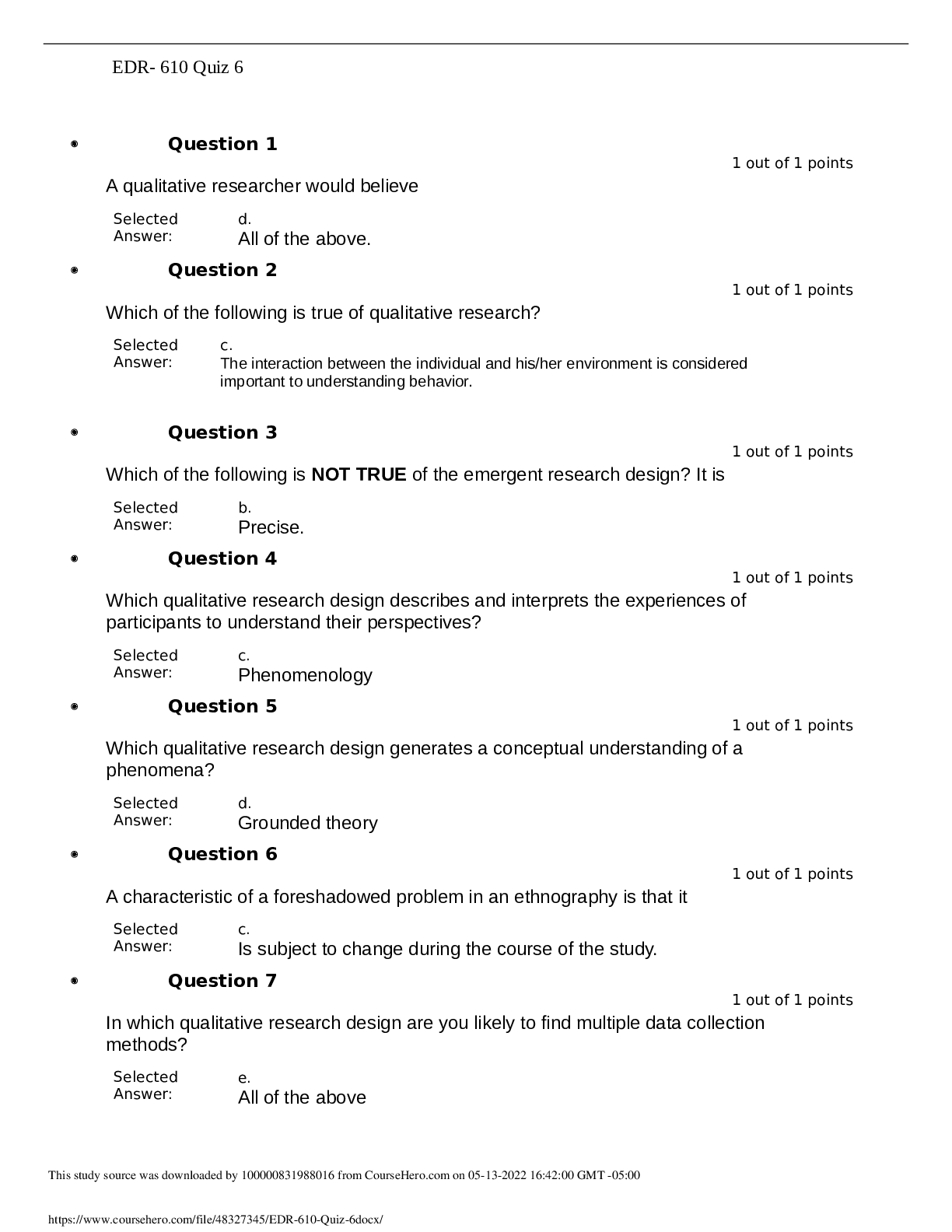

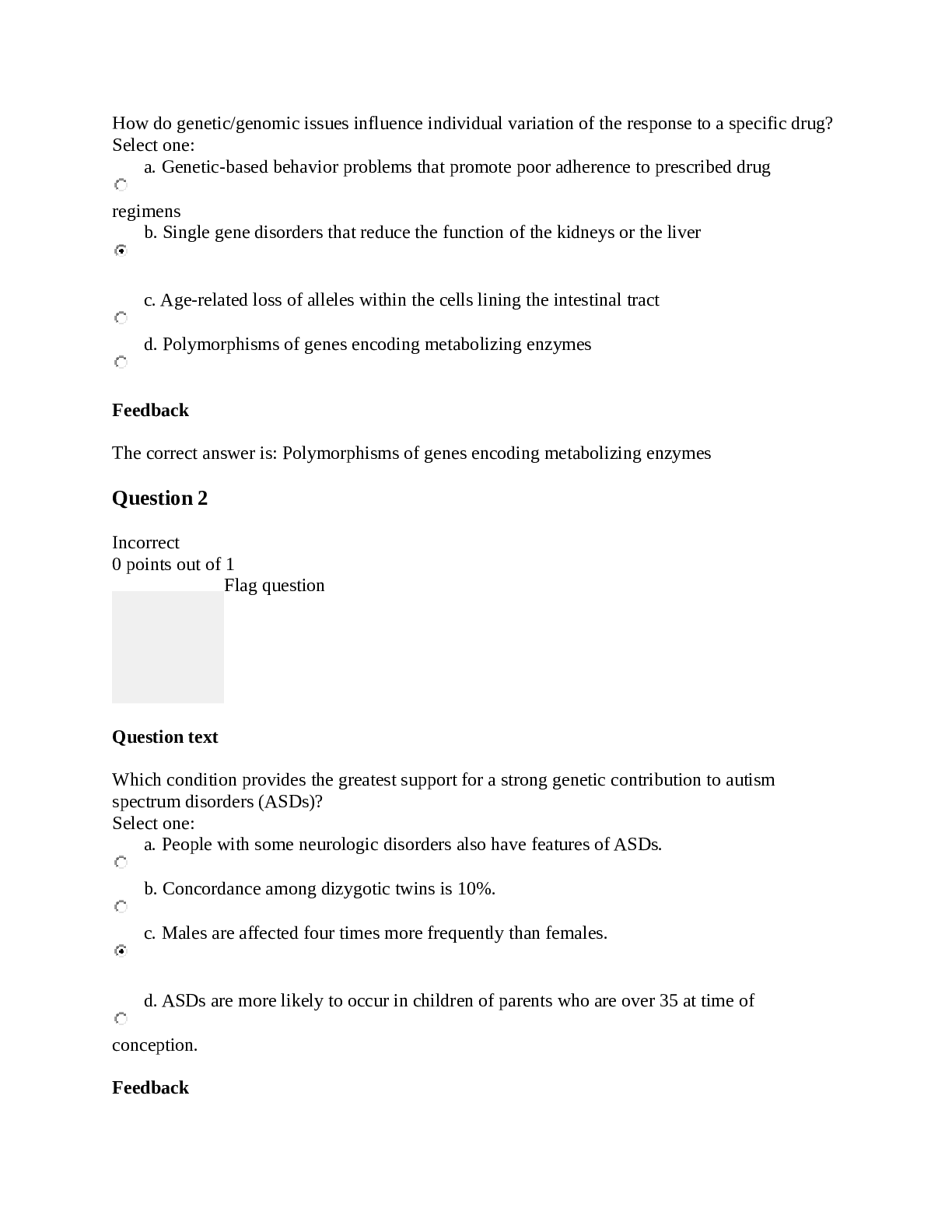
.png)
